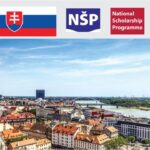How International Students Can Create a CV and Cover Letter That Stand Out.
If you’re an international student studying overseas, you’ve undoubtedly come to the conclusion that presentation is more important than credentials when it comes to getting a good job or internship. Additionally, an employer examines your resume and cover letter first. They serve as your own sales pitch. No matter how talented or driven you are, your application could be rejected in a matter of seconds if you don’t get them right.
I understand. It might be really difficult to write a strong CV and cover letter in a foreign nation with various norms and expectations. You already have to balance your education, get used to a new culture, and even pick up a new language. In actuality, though, you will stand out more than you think if you take the time to write a compelling application.
Secure a Part Time Job in Australia
How International Students Can Create a CV and Cover Letter That Stand Out
Let’s go over how to create a CV and cover letter that will help you land interviews.
Step 1: Recognize the Objective of a Cover Letter and CV
Your talents, education, and experience are summarized in your curriculum vitae, or CV. It should take less than ten seconds to scan and be clear and succinct.
You have the opportunity to inject personality in your cover letter. It highlights your qualifications for the position, why you’re interested in it, and how you fit in.
The two documents complement each other: the cover letter explains your story, and the CV demonstrates your abilities.
Step 2: Establish a Robust CV Framework
Avoid trying to be too imaginative. Adhere to a neat, businesslike format. The recruiters are occupied. Make their work easier.
The format you should adhere to is as follows:
Contact Details:
- Complete name
- Telephone number
- Email address
- Any LinkedIn profiles you may have
- Although a complete address is not required, you are welcome to mention your present city.
Objective or Professional Summary (2–3 sentences)
- a brief statement that encapsulates your goals, activities, and identity.
- As an illustration, consider this driven international student who is working toward a Master of Business Administration degree and has practical experience in digital marketing and data research.
- eager to continue developing professionally and contribute to a fast-paced workplace.
Learning
- Provide your degree(s), graduation year, location, and institution.
- If you are a recent graduate or still enrolled in school, mention your accomplishments or pertinent curriculum.
Experience at Work
- Add the dates, location, job title, and company.
- To explain what you accomplished, use bullet points. Prioritize outcomes over duties.
For instance:
- helped create and carry out a social media campaign that resulted in a 40% increase in interaction.
- helped a retail store run on a daily basis, serving more than thirty customers each shift.
Ability
- Enumerate six to ten technical and soft abilities that are pertinent. Data analysis, Excel, public speaking, collaboration, and customer service are a few examples.
- Languages, Projects, Certifications, and Volunteer Experience (if any)
Step 3: Customize Your Resume for Each Position
Most pupils make mistakes here. For each job, they submit the same resume. Avoid doing that.
- Carefully read the job description.
- Emphasize the abilities and credentials they are seeking, and modify your resume accordingly.
- Make sure your resume demonstrates that you possess the “strong communication skills” or “ability to work in a team” that the company has mentioned.
- Speak in the language of your employer. Don’t refer to it as “customer service” if they term it “client support.” Comply with their terms.
Step 4: Writing Your Cover Letter
It’s time to share your tale now. Don’t exceed one page. There should be a purpose behind each sentence.
This is an easy-to-use structure:
First Paragraph
Give a brief introduction. Mention where you found the job and the position you’re applying for. Next, show your excitement.
For instance: “I’m writing to express my interest in the [Job Board] job posting for a part-time marketing assistant at [Company Name].” As a current foreign student working toward a communications degree, I am thrilled about the chance to support your staff and advance my education.
The middle paragraph or paragraphs
Justify your suitability. Discuss how your background and abilities fit the position. Give specifics.
For instance: “I oversaw social media content calendars and helped with Facebook ad campaigns while I was an intern at a digital marketing firm. I am excited to apply the skills I learned from these experiences, which include working with analytics tools and producing engaging content.
If you lack firsthand experience, discuss volunteer work, school projects, or transferable abilities.
Reasons for Your Desire to Work There
Demonstrate that you have completed your homework. Talk about a quality you value in the organization or how the position aligns with your objectives.
For instance: “I respect [Company Name] for its creative use of digital communication and youth engagement. My desire to work in a fast-paced marketing atmosphere and my love of storytelling are ideally matched with this role.
Final Paragraph
Finish with assurance. Express your excitement for the interview and thank them for their time.
For instance: “Thank you for taking a look at my application. I would appreciate the chance to talk about how I can help your team and advance my career. I eagerly await your response.
Step 5: Go over everything again
Grammar and typographical errors give the wrong impression, particularly if English is not your first language. Prior to submitting anything:
- Read aloud from your cover letter and resume.
- Make use of programs like Hemingway or Grammarly.
- Have a mentor or friend look them over.
- Verify names, dates, and contact information twice.
Professionalism is demonstrated via a well-designed application.
Step 6: Make Use of Proper Format
If you want to maintain formatting, save your works as PDFs.
Make sure your files have the correct names: FirstName_LastName_CV.pdf and FirstName_LastName_CoverLetter.pdf.
“My CV final FINAL edit 2.docx” should not be submitted. It appears messy.
Extra Advice:
- Lead with knowledge and incorporate academic initiatives if you lack experience.
- Don’t use elaborate fonts or colors; keep things simple to scan.
- Pay attention to your actions rather than those of your team.
- If at all possible, quantify your accomplishments (e.g., “increased event turnout by 25%”).
- Make sure your resume contains the job description’s keywords when applying for employment online, as many systems employ automatic screening.
Concluding Remarks
Knowing how to present oneself professionally is more important than having the most experience when it comes to writing a strong CV and cover letter as an international student. You are not expected to be flawless by employers. They are searching for potential, enthusiasm, and an openness to learning.
Make an attempt to customize your application. Beyond your grades, show them your true self. You are someone worth interviewing if you have a well-written, well-considered CV and cover letter.
And I promise you that possibilities will present themselves once you have this figured out.










